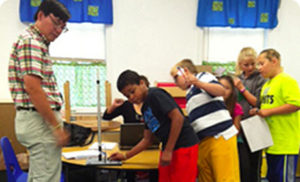
Jo-Anne Perkins, of Cascade Engineering in Grand Rapids, explains the manufacture of trash and recycling bins to the Road Scholars. (Photo by Dana Sitzler)
The 15th annual Michigan Road Scholars trek around Michigan ended on Friday, and the scholars agree it was a wise investment of time and resources. “The pace was exhausting, but well worth it,” said Bob Grese, professor of natural resources in the School of Natural Resources and Environment, and director of the Nichols Arboretum. “I appreciate this opportunity to see some of my students’ hometowns. Michigan is really remarkable. Every region is distinct from the others. This will help me appreciate the unique personalities and perspectives my students bring to the classroom.”
“Every year, our scholars identify potential community/academic collaborations in which their expertise can make a solid contribution to current and future initiatives,” said MRS coordinator Dana Sitzler. “It happened again this year, maybe even more than in previous years.”
Author: Dana Sitzler
Associate Director of State Outreach| [email protected] | 734-764-8029
La direzione principale per risolvere il problema visitez le web è quella di eliminare le cause dell’instabilità dell’erezione o della sua completa soppressione. Uno dei modi per migliorare la potenza è riconsiderare il proprio atteggiamento nei confronti delle cattive abitudini.


